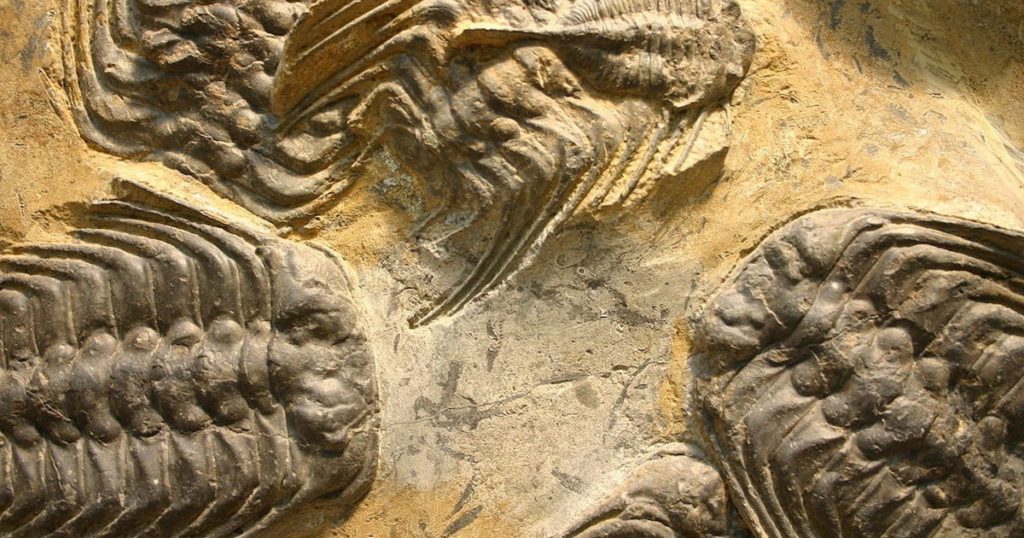 Intelligent Design
Intelligent Design
 Paleontology
Paleontology
The Positive Case for Intelligent Design in Paleontology

Editor’s note: We are delighted to present a series by geologist Casey Luskin on “The Positive Case for Intelligent Design.” This is the fourth entry in the series, a modified excerpt from the new book The Comprehensive Guide to Science and Faith: Exploring the Ultimate Questions About Life and the Cosmos. Find the full series so far here.
Observation (from previous studies): Intelligent agents can rapidly infuse large amounts of information into systems:
- “Intelligent design provides a sufficient causal explanation for the origin of large amounts of information, since we have considerable experience of intelligent agents generating informational configurations of matter…We know from experience that intelligent agents often conceive of plans prior to the material instantiation of the systems that conform to the plans — that is, the intelligent design of a blueprint often precedes the assembly of parts in accord with a blueprint or preconceived design plan.”1
- “Intelligent agents sometimes produce material entities through a series of gradual modifications (as when a sculptor shapes a sculpture over time). Nevertheless, intelligent agents also have the capacity to introduce complex technological systems into the world fully formed. Often such systems bear no resemblance to earlier technological systems — their invention occurs without a material connection to earlier, more rudimentary technologies. When the radio was first invented, it was unlike anything that had come before, even other forms of communication technology. For this reason, although intelligent agents need not generate novel structures abruptly, they can do so.”2
Hypothesis (prediction): Novel biological forms requiring large amounts of new genetic information will appear abruptly in the fossil record, “fully formed,” and without similar precursors.
Experiment (data): Biological novelty commonly appears in the fossil record suddenly, fully formed and without similar precursors or evolutionary intermediates.3 As one zoology textbook states:
Many species remain virtually unchanged for millions of years, then suddenly disappear to be replaced by a quite different, but related, form. Moreover, most major groups of animals appear abruptly in the fossil record, fully formed, and with no fossils yet discovered that form a transition from their parent group.4
The dominant pattern in the fossil record is explosions of new biological forms. The Cambrian explosion is a prime example where most of the major animal phyla appear “fully formed” in a geologically abrupt manner,5 but there are many other examples in the fossil record, including a bird explosion,6 an angiosperm explosion,7 and a mammal explosion.8 Even our genus Homo appears abruptly.9
Conclusion: Many higher taxa arose by intelligent design.
Next, “The Positive Case for Design in Systematics”
Notes
- Stephen C. Meyer, Marcus Ross, Paul Nelson, and Paul Chien, “The Cambrian Explosion: Biology’s Big Bang,” Darwinism, Design, and Public Education, eds. John A. Campbell and Stephen C. Meyer (East Lansing, MI: Michigan State University Press, 2003), 367, 386.
- Stephen C. Meyer, Darwin’s Doubt: The Explosive Origin of Animal Life and the Case for Intelligent Design (New York: HarperOne, 2013), 373, 375.
- Stephen C. Meyer, “The Cambrian Information Explosion,” Debating Design: From Darwin to DNA, eds. M. Ruse and W. Dembski (Cambridge, MA: Cambridge University Press, 2004), 371-391; W.E. Lonnig, “Dynamic genomes, morphological stasis, and the origin of irreducible complexity,” Dynamical Genetics, eds. V. Parisi, V. De Fonzo, and F. Aluffi-Pentini (2004), 101-119; McIntosh, “Evidence of Design in Bird Feathers and Avian Respiration.”
- C.P. Hickman, L.S. Roberts, and F.M. Hickman, Integrated Principles of Zoology 8th ed. (St. Louis, MO: Times Mirror/Moseby College Publishing, 1988), 866.
- R.S.K. Barnes, P. Calow, and P.J.W. Olive, The Invertebrates: A New Synthesis, 3d ed. (London, UK: Blackwell Scientific, 2001), 9-10. See also Douglas H. Erwin and James W. Valentine, The Cambrian Explosion: The Construction of Animal Biodiversity (Greenwood Village, CO: Roberts and Company Publishers, 2013); Meyer, Darwin’s Doubt; Samuel A. Bowring et al., “Calibrating Rates of Early Cambrian Evolution,” Science 261 (September 3, 1993), 1293-1298; Kevin J. Peterson et al., “MicroRNAs and metazoan macroevolution: insights into canalization, complexity, and the Cambrian explosion,” BioEssays 31 (2009), 736. For documentation on the sudden appearance of fossils in the Cambrian explosion, see Casey Luskin, “How ‘Sudden’ Was the Cambrian Explosion? Nick Matzke Misreads Stephen Meyer and the Paleontological Literature; New Yorker Recycles Misrepresentation,” Evolution News (July 16, 2013), https://evolutionnews.org/2013/07/how_sudden_was_/ (accessed October 27, 2020).
- A. Cooper and R. Fortey, “Evolutionary Explosions and the Phylogenetic Fuse,” Trends in Ecology and Evolution 13 (1998), 151-156.
- S. De Bodt et al., “Genome duplication and the origin of angiosperms,” Trends in Ecology and Evolution 20 (November 2005), 591-597; P.R. Crane et al., “The origin and early diversification of angiosperms,” Nature 374: (March 2, 1995), 27-33.
- See Niles Eldredge, The Monkey Business: A Scientist Looks at Creationism (New York: Washington Square Press, 1982).
- For details, see chapter 32 in this volume, “Do Fossils Demonstrate Human Evolution?”; Casey Luskin, “Human Origins and the Fossil Record,” Ann Gauger, Douglas Axe, and Casey Luskin, Science and Human Origins (Seattle, WA: Discovery Institute Press, 2012), 45-83; Casey Luskin, “Missing Transitions: Human Origins and the Fossil Record,” Theistic Evolution: A Scientific, Philosophical, and Theological Critique, eds. J. P. Moreland, Stephen C. Meyer, Christopher Shaw, Ann K. Gauger, and Wayne Grudem (Wheaton, IL: Crossway, 2017), 437-473.
